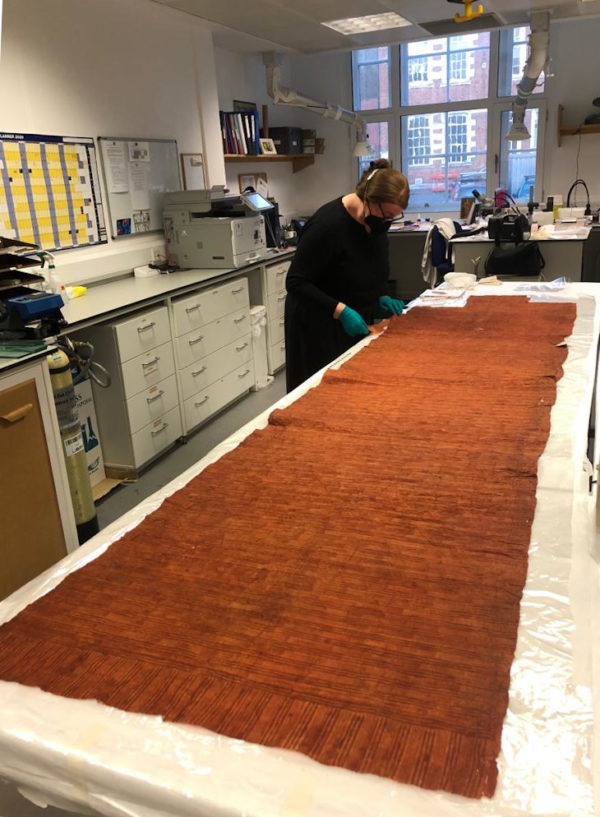By Kate Berlewen, Conservator
This object from the collections at RAMM is a 3 meter long strip of dyed and hand painted Polynesian barkcloth, but you might not have known that before conservation! The cloth had been folded and crumpled up like this probably since the 1880s when it was collected. The material had become stiff and inflexible in this scrunched up shape, which was about the size of an A4 piece of paper. That meant that over the last 140 years no one had been able to open it to see how the cloth was made and decorated, or even how big it was.
Opening the barkcloth took just under a month. We were able to treat the barkcloth here at RAMM because we have a very specialised humidification chamber, where objects can be exposed to highly controlled amounts of moisture in the air. Over many days this made the barkcloth flexible enough to be painstakingly opened bit by bit, until it could be carefully repaired and laid flat. Now the barkcloth has been given new packaging to go into storage on a roller which will prevent it from getting into this sort of state again.

The old label on the barkcloth said it was from Africa, but once it had been opened and examined in the conservation labs we could see it was from Polynesia, probably from Hawaii. The beautiful deep yellow colour of the cloth’s dye can also now be appreciated, along with the incredible hand painted design. Each line in the 3 meter long sheet was painted by hand with a pronged wooden fork dipped in ink – without a ruler to help! Barkcloth that is this old is quite rare, and now that this one has been conserved it can be researched and studied properly, as well as displayed.
This content is viewable by members only. Login or sign up to get access.

